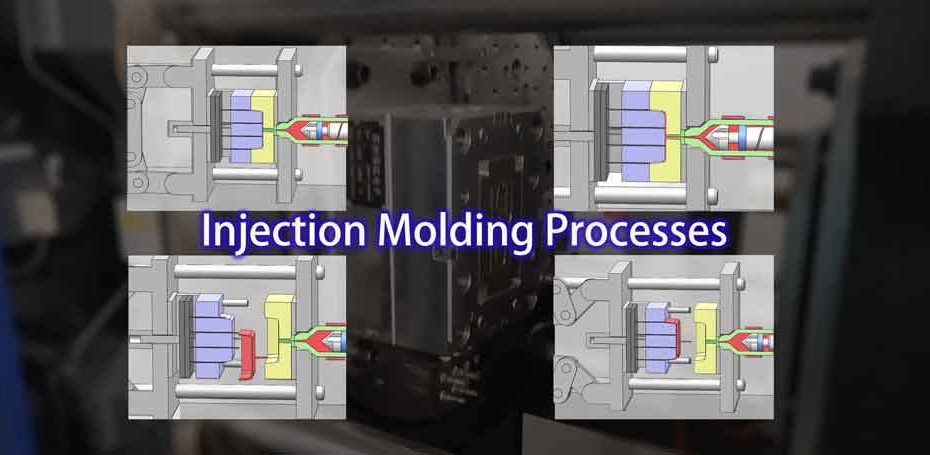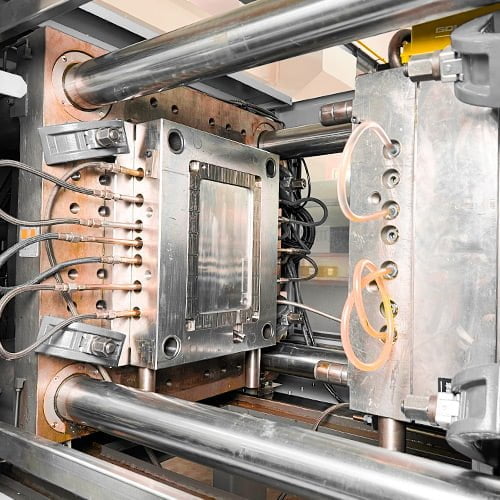A Comprehensive Guide to the Plastic Shot Molding Modern Technology
Plastic injection molding stands as a keystone of modern production, providing unrivaled effectiveness and precision in the manufacturing of complicated plastic elements. As the landscape of making develops, understanding the future trajectory of shot molding comes to be increasingly imperative.

Summary of Plastic Shot Molding
Plastic shot molding is a commonly utilized manufacturing process that allows the reliable production of complicated plastic components with high precision. This innovation has actually become a cornerstone in numerous markets, including vehicle, durable goods, and electronics, owing to its capability to generate huge amounts of components quickly and cost-effectively.
The process involves melting plastic granules and infusing the molten material into a pre-designed mold and mildew. When cooled down, the mold and mildew is removed to reveal the ended up element, characterized by its elaborate information and uniformity. The versatility of products utilized in plastic shot molding, varying from thermoplastics to thermosetting polymers, allows makers to customize products to fulfill specific requirements, such as versatility, resistance, and stamina to heat or chemicals.
Moreover, the effectiveness of this approach decreases waste and minimizes manufacturing prices, making it an eye-catching choice for companies aiming to enhance their production processes. As modern technology advances, developments such as multi-material shot molding and the assimilation of automation proceed to boost the abilities of plastic injection molding, allowing the production of progressively sophisticated items that fulfill the demands of contemporary markets.
The Injection Molding Refine
Shot molding is an innovative production strategy that includes numerous essential actions to change raw plastic materials right into finished products. The procedure begins with the prep work of plastic pellets, which are fed right into a heated barrel. Here, the pellets are thawed and homogenized to accomplish a consistent thickness.
Once adequately heated, the liquified plastic is infused into a specifically engineered mold under high pressure. This action is important, as it permits the product to load every cavity of the mold, ensuring the end product accurately mirrors the intended style. The injection time have to be very carefully controlled to stop flaws and make sure efficient material usage.
After the mold is loaded, it undertakes a cooling stage, where the plastic solidifies right into its last form. This cooling procedure can differ in period depending on the thickness and intricacy of the component. When cooled down, the mold and mildew opens, and the completed product is ejected.
Key Benefits of This Technology
Among the most substantial benefits of shot molding innovation depends on its capacity to generate high quantities of regular and specific parts with marginal waste. This efficiency originates from the automated nature of the procedure, which substantially reduces manual labor and the potential for human mistake. Because of this, suppliers can accomplish a high level of repeatability in their output, guaranteeing that each part meets rigorous top quality requirements.
Another trick benefit is the flexibility of materials that can be utilized in shot molding. A large range of thermoplastics and thermosetting polymers can be molded, permitting tailored residential properties to match particular applications. In addition, the innovation sustains complicated geometries and elaborate styles, which can be testing to achieve with various other making techniques.
The preliminary investment in mold and mildews may be high, however the long-term savings in material waste and labor make shot molding a financially sensible alternative. These benefits solidify shot molding's setting as a recommended production process throughout various markets - Plastic Injection Molding.
Applications Throughout Industries

In the medical area, injection molding is vital for making top notch, clean and sterile elements, including syringes, surgical instruments, and housings for clinical gadgets. The capability to maintain tight tolerances and create intricate geometries makes it an excellent choice for these applications. The packaging market benefits from shot molding by generating a large variety of containers, closures, and dispensers that are both efficient and affordable.
The plaything industry counts heavily on shot molding to develop colorful, long lasting, and safe products that interest kids. Finally, the building sector utilizes shot molding for generating different components, installations, and components that add to both performance and style. Overall, the wide range of applications shows the indispensable function of injection molding technology ahead of time various sectors.
Future Trends in Injection Molding
Welcoming innovations in innovation, the future of injection molding is poised for substantial makeover driven by developments in materials, automation, and lasting practices. Among the most significant patterns is the advancement of recycled and bio-based polymers, which not only reduce dependence on fossil fuels however likewise lessen environmental influence. As producers significantly prioritize eco-friendly services, these products are ending up being a lot more prevalent in production.
Automation is an additional crucial fad shaping the industry. The assimilation of anchor robotics and fabricated knowledge right into the shot molding process improves performance, accuracy, and manufacturing speed. Smart factories geared up with IoT tools permit for real-time monitoring and anticipating upkeep, lowering downtime and optimizing functional procedures.
Additionally, the shift in the direction of tailored and small-batch manufacturing is acquiring momentum. Advanced technologies such as 3D printing and additive manufacturing allow rapid prototyping and the production of complicated geometries that were formerly unattainable. This shift permits firms to react more efficiently to market demands and customer choices.
Verdict
Finally, plastic shot molding technology represents a keystone of modern-day production, using performance and versatility in producing complicated components across diverse sectors. The in-depth exam of the injection molding procedure highlights its critical stages and benefits, while the expedition of applications emphasizes its widespread importance. Arising fads, consisting of sustainability and automation, suggest an appealing future for this technology. Proceeded Check Out Your URL developments are likely to boost manufacturing capabilities and ecological considerations, shaping the landscape of manufacturing.
Plastic shot molding stands as a foundation of modern-day manufacturing, providing exceptional performance and accuracy in the manufacturing of facility plastic components (Plastic Injection Molding). The adaptability of materials used in plastic injection molding, varying from thermoplastics to thermosetting polymers, allows makers to tailor items to meet details demands, such as stamina, adaptability, and resistance to warmth or chemicals
Injection molding is a sophisticated production method that entails several critical steps to change raw plastic materials into completed items.The convenience and effectiveness of shot molding innovation Resources have led to its widespread fostering throughout numerous industries.In final thought, plastic injection molding modern technology stands for a keystone of modern manufacturing, offering performance and flexibility in generating complicated components throughout diverse sectors.